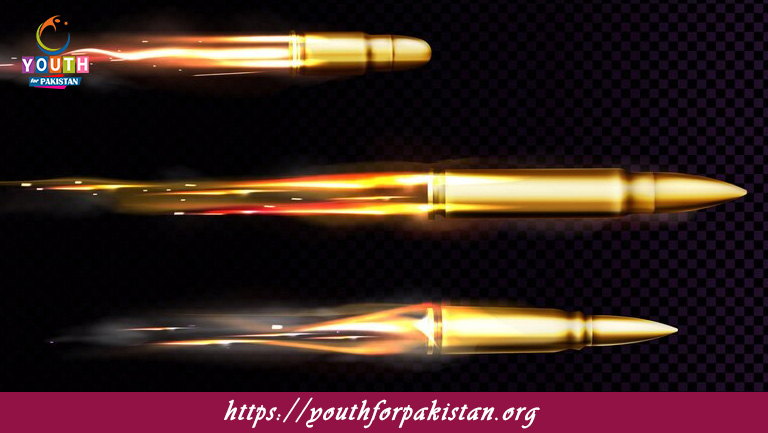Welcome to the Linear Momentum MDCAT MCQs with Answers. In this post, we have shared Linear Momentum Multiple Choice Questions and Answers for PMC MDCAT 2024. Each question in MDCAT Physics offers a chance to enhance your knowledge regarding Linear Momentum MCQs in this MDCAT Online Test.
Linear Momentum MDCAT MCQs Test Preparations
Linear momentum is defined as:
a) Mass times acceleration
b) Force times distance
c) Mass times velocity
d) Force times time
The unit of linear momentum is:
a) Newton (N)
b) Kilogram-meter per second (kg·m/s)
c) Joule (J)
d) Newton-meter (N·m)
If the mass of an object is doubled and its velocity remains constant, the momentum:
a) Doubles
b) Halves
c) Quadruples
d) Remains unchanged
The principle of conservation of momentum states that in an isolated system:
a) Total momentum remains constant if no external forces act on it
b) Total momentum increases with time
c) Total momentum decreases with time
d) Momentum is always zero
For two colliding objects, the total momentum before the collision is:
a) Greater than the total momentum after the collision
b) Less than the total momentum after the collision
c) Equal to the total momentum after the collision
d) Unrelated to the total momentum after the collision
If a car of mass 1000 kg is moving at a velocity of 20 m/s, its momentum is:
a) 2000 kg·m/s
b) 10000 kg·m/s
c) 500 kg·m/s
d) 200 kg·m/s
In a perfectly elastic collision:
a) Kinetic energy and momentum are conserved
b) Only momentum is conserved
c) Only kinetic energy is conserved
d) Neither energy nor momentum is conserved
The momentum of a particle is defined as:
a) The product of its mass and acceleration
b) The product of its mass and velocity
c) The product of its force and time
d) The product of its velocity and time
If two objects with masses
𝑚
1
m
1
and
𝑚
2
m
2
collide elastically and
𝑚
1
m
1
is initially at rest, the final velocities can be found using:
a) Conservation of energy and momentum
b) Newton’s laws of motion only
c) Conservation of energy only
d) Conservation of charge
When an astronaut throws a tool in space, the momentum of the astronaut:
a) Increases
b) Decreases
c) Remains the same
d) Becomes zero
If a rocket expels gases backward, the momentum of the rocket:
a) Increases
b) Decreases
c) Remains the same
d) Becomes zero
In a collision where two objects stick together, the collision is called:
a) Elastic
b) Inelastic
c) Perfectly elastic
d) Perfectly inelastic
The change in momentum of an object is equal to:
a) Force times time
b) Mass times velocity
c) Kinetic energy
d) Force times distance
In a closed system with no external forces, the total momentum:
a) Can increase
b) Can decrease
c) Remains constant
d) Is zero
The momentum of an object with mass
𝑚
m and velocity
𝑣
v is:
a)
𝑚
⋅
𝑣
m⋅v
b)
𝑚
⋅
𝑎
m⋅a
c)
𝑣
⋅
𝑎
v⋅a
d)
𝐹
⋅
𝑡
F⋅t
The impulse experienced by an object is equal to:
a) The change in momentum
b) The change in kinetic energy
c) The mass times the acceleration
d) The force times the distance
In a perfectly inelastic collision, the two objects:
a) Bounce off each other
b) Stick together and move as one mass
c) Have no change in kinetic energy
d) Do not conserve momentum
If an object’s momentum changes, a:
a) Force must have acted on it
b) No force is needed
c) Gravitational field must be present
d) Temperature must have changed
The total momentum of two objects before and after an elastic collision is:
a) Different
b) Equal
c) Zero
d) Unrelated
A ball of mass 0.5 kg is moving with a velocity of 10 m/s. Its momentum is:
a) 5 kg·m/s
b) 10 kg·m/s
c) 15 kg·m/s
d) 20 kg·m/s
In a collision, if object A exerts a force on object B, object B exerts an equal and opposite force on object A. This is an example of:
a) Newton’s First Law
b) Newton’s Second Law
c) Newton’s Third Law
d) Conservation of Energy
The momentum of a system is conserved if:
a) No external forces act on it
b) External forces are present
c) There is no friction
d) The system is in equilibrium
The impulse-momentum theorem states that impulse is equal to:
a) Mass times acceleration
b) Change in kinetic energy
c) Change in momentum
d) Force times time
A 2-kg object moves with a velocity of 3 m/s. Its momentum is:
a) 5 kg·m/s
b) 6 kg·m/s
c) 9 kg·m/s
d) 12 kg·m/s
In an inelastic collision, total momentum is:
a) Conserved
b) Not conserved
c) Zero
d) Variable
The change in momentum of an object is represented by:
a)
Δ
𝑝
=
𝑚
⋅
Δ
𝑣
Δp=m⋅Δv
b)
Δ
𝑝
=
𝐹
⋅
𝑡
Δp=F⋅t
c)
Δ
𝑝
=
𝑚
⋅
𝑎
⋅
𝑡
Δp=m⋅a⋅t
d)
Δ
𝑝
=
𝑚
⋅
𝑣
⋅
𝑡
Δp=m⋅v⋅t
When a truck and a car collide, if the truck has more mass, the truck experiences:
a) A greater force
b) A smaller momentum change
c) A greater momentum change
d) No change in momentum
The momentum of an object moving in a circle at constant speed is:
a) Constant
b) Increasing
c) Decreasing
d) Zero
The impulse given to an object is equal to the change in its:
a) Kinetic energy
b) Velocity
c) Force
d) Momentum
If a particle’s mass is halved and its velocity is doubled, its momentum:
a) Stays the same
b) Doubles
c) Quadruples
d) Halves
If a ball with mass 0.8 kg moves at 5 m/s and collides with a wall, the momentum change depends on:
a) The wall’s mass
b) The ball’s speed and direction change
c) The ball’s temperature
d) The ball’s color
In a collision, the object with greater mass will experience:
a) A greater change in momentum
b) A smaller change in momentum
c) No change in momentum
d) A change in kinetic energy
A 4-kg object moving with a velocity of 2 m/s has a momentum of:
a) 4 kg·m/s
b) 6 kg·m/s
c) 8 kg·m/s
d) 10 kg·m/s
A car traveling at 30 m/s crashes into a stationary car. If the cars stick together, the final velocity is determined by:
a) Conservation of momentum
b) Conservation of energy
c) Newton’s First Law
d) Newton’s Second Law
The total momentum of an isolated system is:
a) Always increasing
b) Always decreasing
c) Constant
d) Variable
A 0.2-kg ball is dropped from a height. Upon reaching the ground, its momentum:
a) Decreases
b) Increases
c) Remains the same
d) Becomes zero
If two cars of equal mass collide and stick together, their combined momentum after the collision is:
a) Half of the total momentum before the collision
b) Equal to the total momentum before the collision
c) Double the total momentum before the collision
d) Zero
During a collision, if the contact time between two objects is increased, the impulse experienced by the objects:
a) Decreases
b) Increases
c) Remains the same
d) Becomes zero
The momentum of a system of particles is conserved if:
a) The particles interact with external forces
b) The particles interact only with each other
c) There are no forces involved
d) The particles are at rest
If a car is moving with momentum and suddenly stops, the change in momentum is:
a) Zero
b) Equal to the initial momentum
c) Double the initial momentum
d) The initial momentum squared
If you are interested to enhance your knowledge regarding Physics, Chemistry, Computer, and Biology please click on the link of each category, you will be redirected to dedicated website for each category.










